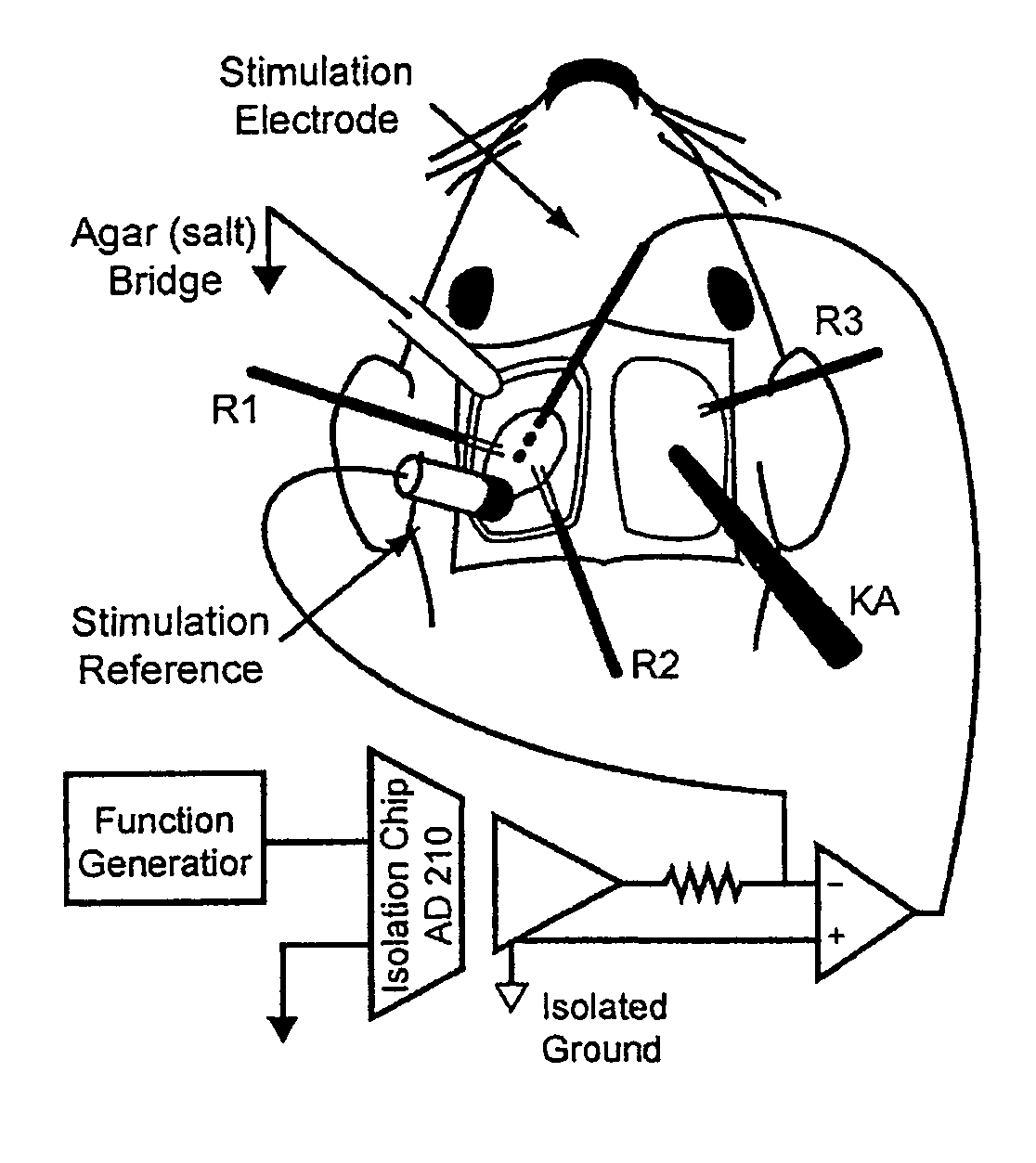Methods and devices for determining brain state
a brain state and brain technology, applied in the field of brain state determination methods and devices, can solve problems such as brain damage, complex behaviors, and system perturbation in injurious and/or undesirable ways
- Summary
- Abstract
- Description
- Claims
- Application Information
AI Technical Summary
Benefits of technology
Problems solved by technology
Method used
Image
Examples
examples
Materials and Electronics
[0049]Male Sprague-Dawley rats (e.g., average 284 g; 65 days old) may be anaesthetized with a Ketamine / Xylazine (KX) mixture of 100 mg / ml Ketamine with 20 mg / ml Xylazine in a ratio of 8:1 by volume, administered in doses of 0.1 ml / 100 g. Once the animal becomes areflexive, which may be determined by toe or tail pinch, ear and incisor bars may be used to stabilize the animal. To maintain areflexia, additional doses of KX may be administered throughout the experiment. Core temperature may be monitored with a rectal thermometer and controlled with a heating pad. To expose the skull, a vertical incision may be made from the anterior frontal bone to the external occipital crest. Next, a 4 mm wide craniotomy may be performed bilaterally from the coronal to the lambdoid sutures leaving a 2 mm strip of bone over the sagittal sinus intact. Opening the dura mater that covers the left hemisphere may expose the neocortex. To enter the body of the lat...
PUM
 Login to View More
Login to View More Abstract
Description
Claims
Application Information
 Login to View More
Login to View More - R&D
- Intellectual Property
- Life Sciences
- Materials
- Tech Scout
- Unparalleled Data Quality
- Higher Quality Content
- 60% Fewer Hallucinations
Browse by: Latest US Patents, China's latest patents, Technical Efficacy Thesaurus, Application Domain, Technology Topic, Popular Technical Reports.
© 2025 PatSnap. All rights reserved.Legal|Privacy policy|Modern Slavery Act Transparency Statement|Sitemap|About US| Contact US: help@patsnap.com



